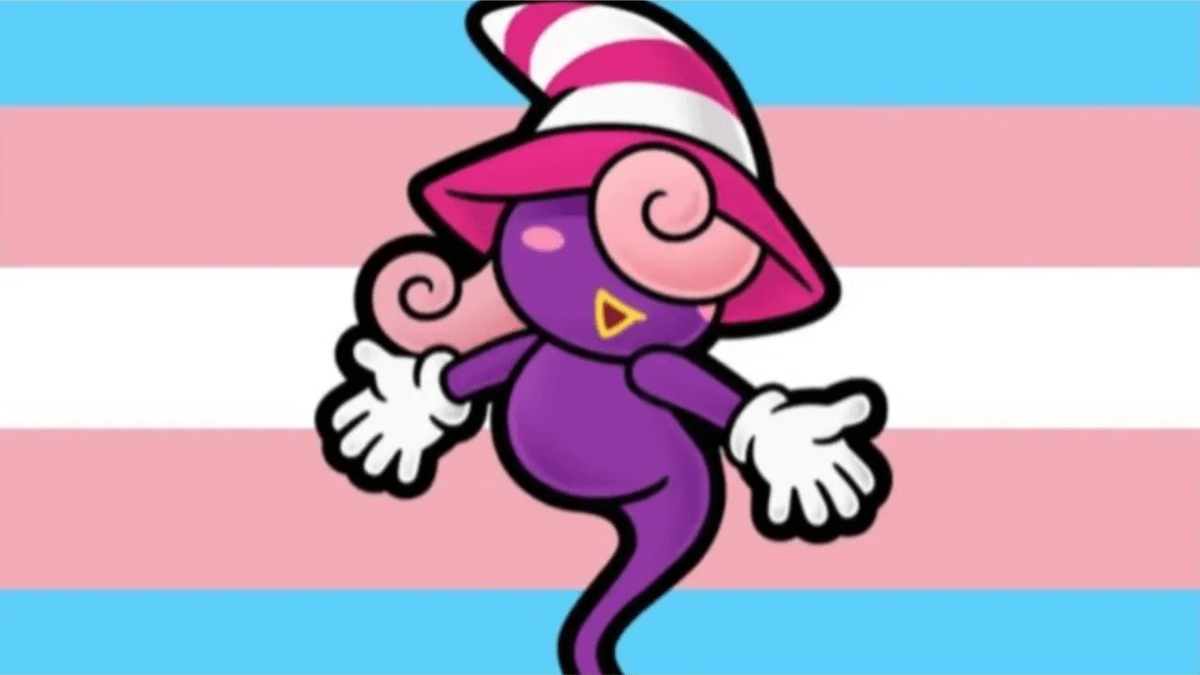It’s a good time to be a Paper Mario fan. Nintendo recently announced a remake of the classic RPG game, and now the company announced it’s remaking the sequel Paper Mario: The Thousand-Year Door. With this remake in particular, Nintendo has a chance to fix an almost 20-year-old censorship mistake – involving Vivian.
Nintendo made the announcement in its September Direct presentation – along with a trailer showcasing “enhanced graphics.” This genre-bending 2004 game mixed platforming with traditional role playing elements (like turn-based battling) to create something perennially unique.
The plot involves Mario finding some crystals to open an old door so he can save Peach. It’s a Mario game, so it’s more about the adventure anyway. Vivian, however, is a story all her own.
In the game, Vivian breaks away from the villainous Shadow Sirens and her sisters Beldam and Marilyn to join Mario as his fifth party member. In the original Japanese version of the game and some foreign translations, Vivian’s gender varies.
In the American version of the game, she’s described only with feminine pronouns. Over on The Cutting Room Floor, we can get a better sense of how that worked. The Japanese version of the game describes Vivian as: “A former member of the Shadow Trio. He may look like a girl, but he’s actually a boy.”
The English version says “Vivian suffers from a bit of inferiority complex” and attempts to sidestep that altogether.
The French and Spanish versions say “He pretends to be a girl, but is actually a boy.” The German version doesn’t mention it in the description, and the Italian version was perhaps the most progressive: “She used to be a man, but now she’s a woman and proud of it.”
In Goombella’s tattle, in the English version, she’s described as “the youngest of the three Shadow Sirens.” The Italian is the same. The French version calls her “The youngest sister… I mean, brother.”
In Spanish it’s “She’s the smallest of the trio… Well… HE’S the smallest.”
To summarize: Japanese/Spanish/French lean more toward cross-dressing, Italian is proudly trans and English and German get rid of the references altogether.
With this remake, Nintendo has a chance to present Vivian as she is, not censor her. People are hopeful this could be the case. One X user pointed out that the computer in the trailer had a red eye, not green, which is what it was in the Japanese version, meaning that maybe more will carry over.
However, Japan leaned more toward cross-dressing but the argument is that maybe they will correctly portray Vivian this time.
“Interesting note about the TTYD trailer: TEC’s ‘eye’ is red, not green. The green was a change made in versions outside of Japan. It being red in this trailer could imply other elements from the Japanese version will be brought back MEANING, trans Vivian internationally canon.”
People love Vivian!
Vivian is actually not the first trans character in a Nintendo game. In September 1998, Nintendo released the sequel to the original Super Mario Bros. game and introduced a character named Birdo, one of the first trans characters in any video game.
In the instruction manual for the game, Birdo is described as “a boy who wants to be a girl.” The game also mentioned that Birdo preferred to be called Birdetta. However, Nintendo has never officially commented on the matter.
Was Birdo’s trans representation meant to be mockery? It may have been, but in the years since, Birdo stands out as a positive step toward equal trans representations in video games, as well as a fan favorite. It remains to be seen how Nintendo handles Vivian, but it’s a great opportunity to move forward.

